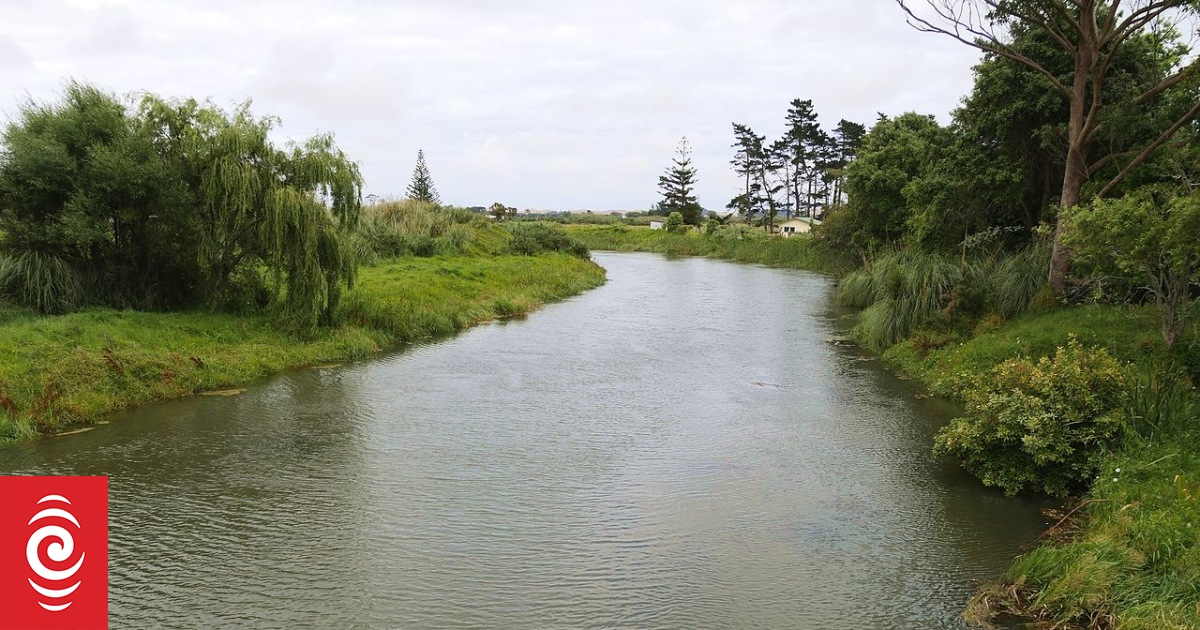Metres-long giant caterpillar-like swathes of bright green invasive caulerpa seaweed washed ashore at Ōkupu Beach in Great Barrier’s Blind Bay. Photo / Sid Wales
Northland Regional Council (NRC) leaders are calling for an urgent meeting with Biosecurity Minister Damien O’Connor amidst what they say is Government inaction over a major threat to New Zealand from exotic caulerpa, the “worst invasive seaweed” pest in the world.
NRC biodiversity and biosecurity working party chair Geoff Crawford said caulerpa posed a huge threat to Te Tai Tokerau as part of the 1000km of North Island coastline most at risk from the pest – and stretching from Cape Rēinga in the north to East Cape and including coastline off Auckland, Whitianga and Tauranga.
“Caulerpa is the worst invasive seaweed in the world. The Government is just watching with its hands crossed behind its back,” Crawford said.
A Biosecurity Minister spokesman said the Government was not aiming to eradicate the pest from New Zealand and had spent almost $2 million on its exotic caulerpa response between July 2021 and February 2023.
Advertisement
“While Biosecurity New Zealand had to conclude that eradicating exotic caulerpa (meaning complete removal from New Zealand) was not feasible, the team there has always taken the view that localised elimination in some areas could be possible,” he said.
NRC chair Tui Shortland said the local environment, cultural practices, marine industries and traditional collection of kaimoana (seafood) in Northland were all at risk from caulerpa on Great Barrier Island (Aotea).
Shortland said the council had written to the minister regarding the threat, which was of the utmost urgency for Northland due to its presence on Great Barrier, the speed at which it spread, and the lack of an appropriate response to date by Biosecurity New Zealand.

The minister’s spokesperson said the Government’s $1.9m response had funded a comprehensive operation including surveillance, scientific research and advice, public information campaigns and local ambassador programmes.
Advertisement
He said the NRC’s request for a meeting had been received and was under consideration.
The spokesman said exotic caulerpa was being taken seriously. Biosecurity New Zealand responded quickly to its discovery on Great Barrier Island in July 2021 and then later on Great Mercury Island. Immediate surveillance was carried out to determine its distribution and the most appropriate management options.
Controlled area notices (closing specified harbours to anchoring) were put in place on Great Barrier, supported by mana whenua with a rāhui. This reduced the likelihood of exotic caulerpa spread.
The superspreader invasive seaweed has not yet been found in Northland. It has only been confirmed in New Zealand on Great Barrier and to its south on Great Mercury Island, eight kilometres off the Coromandel Peninsula coast.
Shortland said the NRC would be seeking $500,000 annually from the Government towards the region’s efforts for preparing for the invasive seaweed’s potential arrival into Northland.
The minister’s spokesman said the NRC and Biosecurity New Zealand needed to work together to develop a programme to manage any risk Northland faces from exotic caulerpa. This would include jointly working out preparedness costs, rather than determining a blanket amount before any work programme had been agreed.
Crawford said the NRC had written to the minister in March about the problem but had heard nothing. It had written again last week.
/cloudfront-ap-southeast-2.images.arcpublishing.com/nzme/MANMR4WDK5FSNLX4YCG2QZU6QA.JPG)
He said caulerpa’s spread elsewhere seemed inevitable if urgent measures were not taken immediately. The Government response had been insufficient, lacked seriousness and had not adequately worked on tools to control or eradicate caulerpa.
“Caulerpa is already changing New Zealand’s way of life. On Great Barrier, it has already seen places like Tryphena closed for seven months, and counting,” Crawford said.
Caulerpa was included in Biosecurity New Zealand’s six-monthly national marine high-risk site surveillance that included Whangārei Harbour and Ōpua Marina and Waikare Inlet.
Advertisement
■ Local Democracy Reporting is Public Interest Journalism funded through NZ On Air



